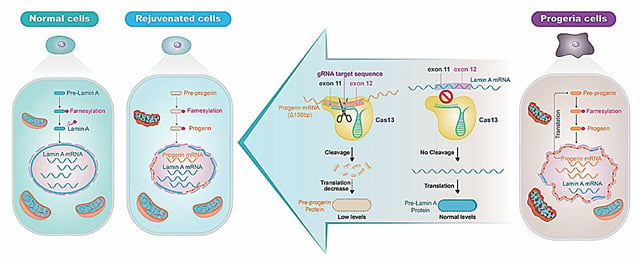Overview
- The therapy employs RfxCas13d molecular “scissors” guided by a custom progerin gRNA to selectively degrade mutant RNA while preserving normal lamin A
- Treated mouse models showed reversal of key disease traits such as hair loss, skin atrophy, spinal curvature and impaired mobility alongside restored body weight and organ function
- Application of the RNA-targeting tool to aged human skin cells delayed cellular aging signs and improved nuclear envelope integrity
- Unlike DNA-based CRISPR approaches, this RNA-focused strategy offers a reversible intervention with a potentially higher safety profile and reduced off-target risk
- Researchers are advancing safety validation and development toward clinical trials, with the platform holding promise for other RNA-linked genetic disorders and age-related conditions
